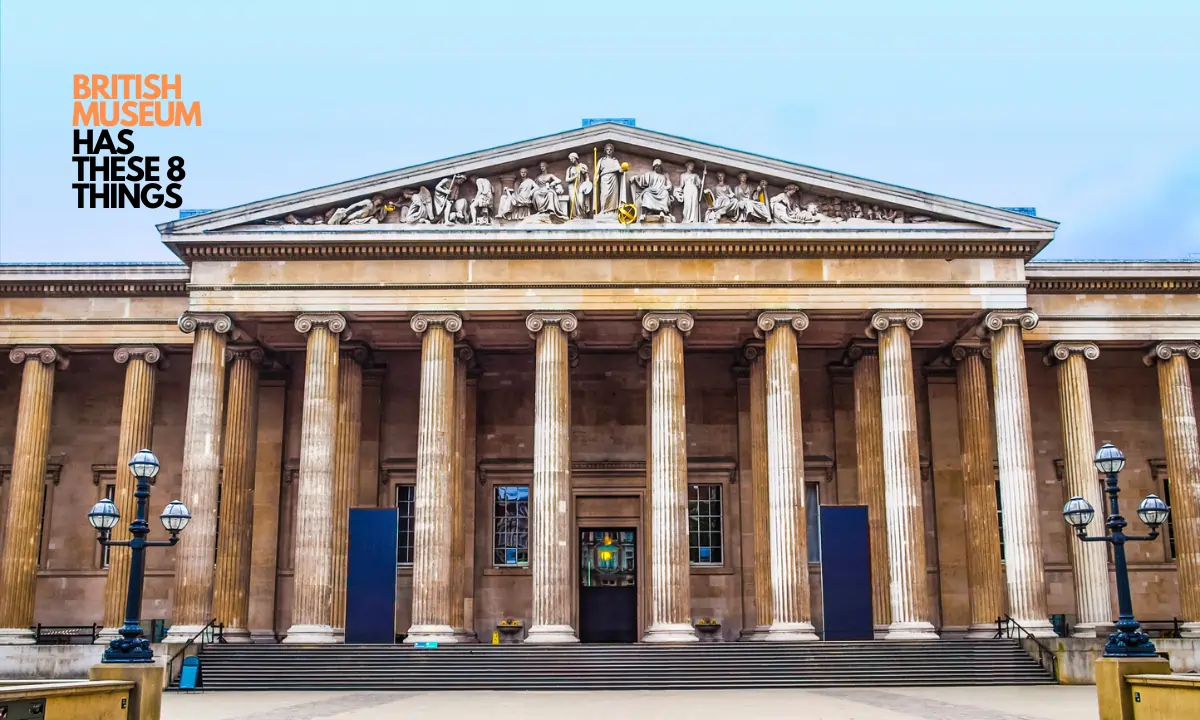The British Museum is found to be one of the most widespread collections of Tantric visual culture in the globe. From the Amaravati Marbles to the Ashoka pillar, 8 Indian artifices that belong to India are now in the British Museum. Many remarkable artefacts that are currently within the British Museum include Amaravati Marbles, The Tipu Sultan Collection, The Sultanganj Buddha, the Indian Miniatures, the Gandhara Sculptures, The Hoysala Bronzes, The Mughal Jade Collection and the Ashoka Pillar.
Amaravati Marbles
The Amaravati collection is also recognized as Amaravati Marbles, which is a series of sculptures and inspirations in the British Museum from the Amaravati Stupa, located in Amaravati in Andhra Pradesh, India. In the British Museum, the Amaravati collection comprises over 120 different pieces that were made from limestone marble known as “Palnad Marble”. In 1880, the Amaravati sculptures were deposited in the British Museum from London and, for a long time, were arranged in the main stairwell unit. After the emergence of the British Museum database, work on the iconography of the Buddhist art at Amaravati was innovated by Dr Monkia Zin.
The Tipu Sultan Collection
The current renovation of the permanent South Asia Gallery at the British Museum has provided a space for the renowned Indian ruler Tipu Sultan. The British Museum showcased his ring, sword and perfume box. Tipu Sultan’s four swords are on preeminent display in two well-known Museums in London and the current renovation of the South Asia Gallery at the British Museum. The Tipu Sultan Collection headlights his story of who refused to become an ally but preferred to die when he fought against colonial aggression in India. The Tipu Sultan’s objects have attracted the positive attention of a large number of travellers across different parts of the globe.
The Sultanganj Buddha
Sultanganj Buddha is identified as the largest known complete Indian metal sculpture that also highlights the talents of the metal craftsmen and sculptors of ancient India. Over the last couple of years, Sultanganj Buddha has been shown in a number of well-known locations throughout the Birmingham Museum and Art Gallery. The smaller sanding Buddhas in stone are now in the British Museum. On the other hand, other Buddha sculptures in the “Asian Art Museum of San Francisco”.
Maharaja Ranjit Singh’s Throne
The goldsmith Hafez Muhammed made Maharaja Ranjit Sing’s throne from about 1820 to 1830. The Maharaja Ranjit Sing’s throne is made of a resin core and wood covered with sheets of repousse, enraged gold. The throne was a significant part of the state property taken by the East India Company in the year 1849. Moreover, it was taken to London from Lahore which is displayed with other treasures of the British Empire at the Great Exhibition in the year 1851. The Maharaja Ranjit Sing’s throne was then displayed in the Indian Museum along with in London. The throne was later passed to the Victoria & Albert Museum with a unique inventory number.
The Gandhara Art
The Gandhara Art is the artistic manifestation of a cultural syncretism between Buddhism and Ancient Greek art located in the northwestern part of India. Craftsmen from the Gandhara area a central region of Indo Greek realm. The story of the Trojan horse has been depicted in the art of Gandhara in the British Museum.
The Hoysala Bronzes
The Hoysala Bronzes are a collection of bronze sculptures found in the British Museum that originated from the Hoysala Empire that ruled parts of India from the 11th to the 13th centuries. The sculptures are known for their exquisite craftsmanship, in-depth carvings, along with the unique combination of Jain motifs and Hindu. The artefacts of Hoysala Bronzes that are currently in the British Museum include the Yoga Narasimha, the dancing Shiva and the Lakshmi Narayana.
The Mughal Jade Collection
The Mughal Jade Collection displayed in the British Museum is a treasure trove of interactive carved jade objects that were created during the time when the Mughals invaded India from the 16th and 18th centuries. Jade is a prized gemstone in the Mughal court that was generally used to create elaborate as well as decorative objects such as paperweights, bowls and vases. The Mughal Jade Collection has been recognized for its eye-catching craftsmanship and intricate designs that are made of high-quality jade materials.
The Ashoka Pillar
The Ashoka Pillar is a fragment of a monolithic sandstone pillar which was originally founded by the Mauryan Emperor Ashoka in the 3rd century BCE. The Ashoka Pillar was characteristically topped with a lion capital and was utilized to disseminate Ashoka’s statutes throughout his empire. The fragment of the Ashoka Pillar in the British Museum is thought to have come from the pillar at Topra, which is situated in Haryana, India.
FAQ
1. What are some notable artefacts from India in the British Museum?
The artefacts include Amaravati Marbles, The Tipu Sultan Collection, The Sultanganj Buddha, Maharaja Ranjit Singh’s Throne, The Gandhara Art, The Hoysala Bronzes, The Mughal Jade Collection, The Ashoka Pillar are notable artefacts from India in the British Museum.
2. How did these artefacts end up in the British Museum?
Many of these artefactswere acquired during the British colonial period through various means, including excavation, purchase, and colonial administration.
3. Can visitors see these artefacts?
Yes, the British Museum displays these items, and they are part of the permanent collection, often highlighted in exhibitions focusing on Indian history and culture.


